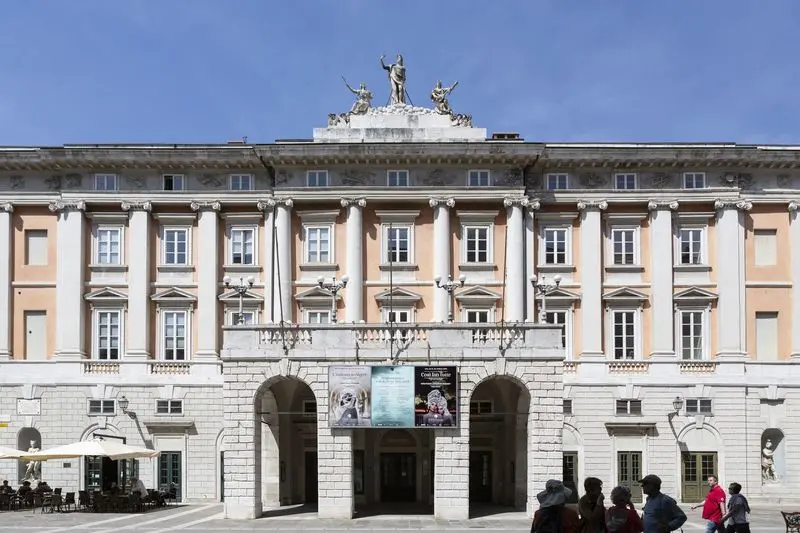

Built between 1798 and 1801 for stockbroker Giovanni Tommasini, the theatre (known initially as the "Nuovo", then the "Grande" from 1821, the "Comunale" from 1861 and finally the "Verdi" from 1901, year of the composer's death) contributed to the new layout of the city in a key place of passage between piazza della Borsa and the future piazza Unità.
The original project by Venetian architect Giannantonio Selva (who designed Teatro La Fenice) was criticised by the director of the Civiche Fabbriche di Trieste, Carlo Steinlein, who asked architect Matteo Pertsch (involved in the construction of Palazzo Carciotti) to introduce variations especially to the main facade.
The difficulty in combining the different visions of Steinlein and the two architects lead to significant delays in carrying out the work, and also makes it complicated to distinguish their respective contributions, although Pertsch's neoclassical inspiration (influenced by his mentor, Giuseppe Piermarini who designed Milan’s Teatro della Scala) is the most obvious.
The sculptures on the main façade (Apollo, flanked by the muses of Tragedy and Opera) and in the base niches (Pluto and Mars) are attributed to Antonio Bosa, a student of Canova. Five cannonballs are set into the façade, reminders of the bombardment suffered by the city in 1813 by the French fleet.
It comprises a main hall with a capacity of 1,300 seats and a "ridotto", originally the "ballroom", which is spread over two levels with a majestic peristalsis of Ionic columns supporting the loggia above.
The most important restoration works were carried out in 1882-1884 (by Eugenio Geiringer who modified the sea-facing façade and the "ridotto") and in 1992-1997 which included work on the original layout of the theatre hall and the roof on the seaside.
Friuli Venezia Giulia Film Commission
Piazza Duca degli Abruzzi 3 — 34132 Trieste
Phone: +39 040 3720142
Email: filmcommission@promoturismo.fvg.it